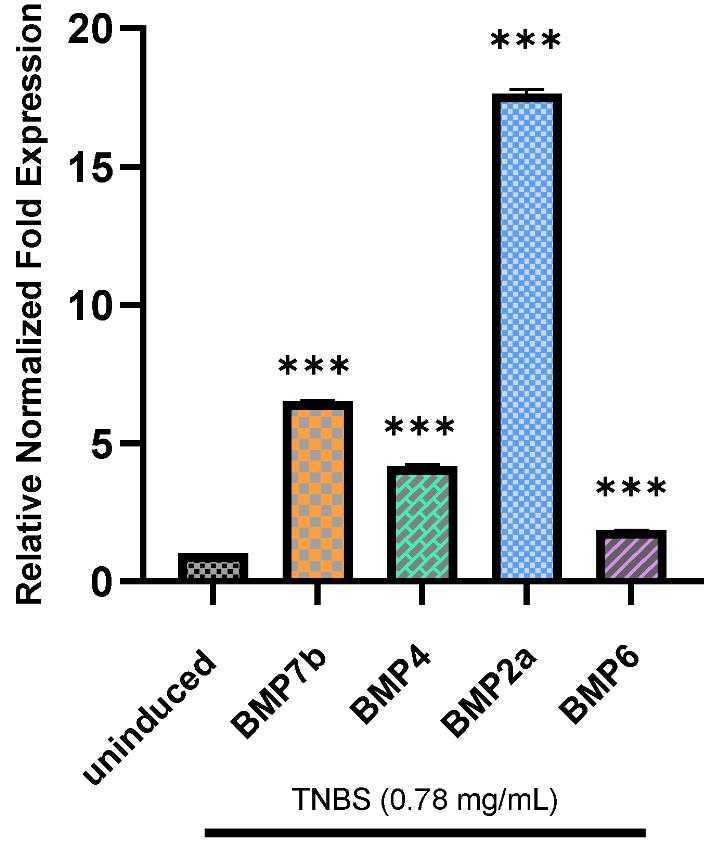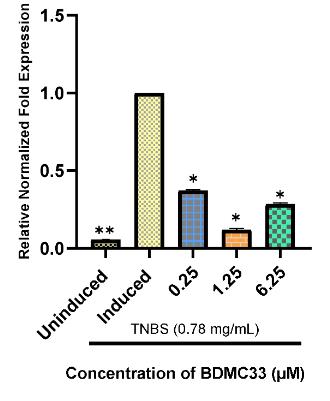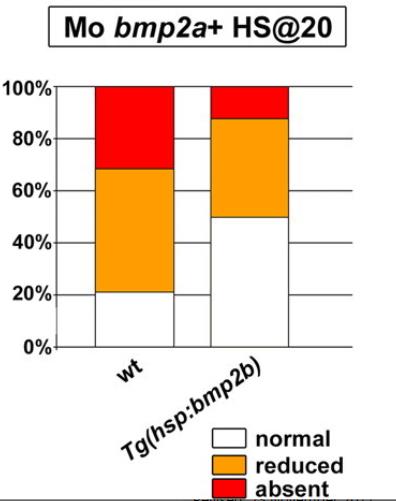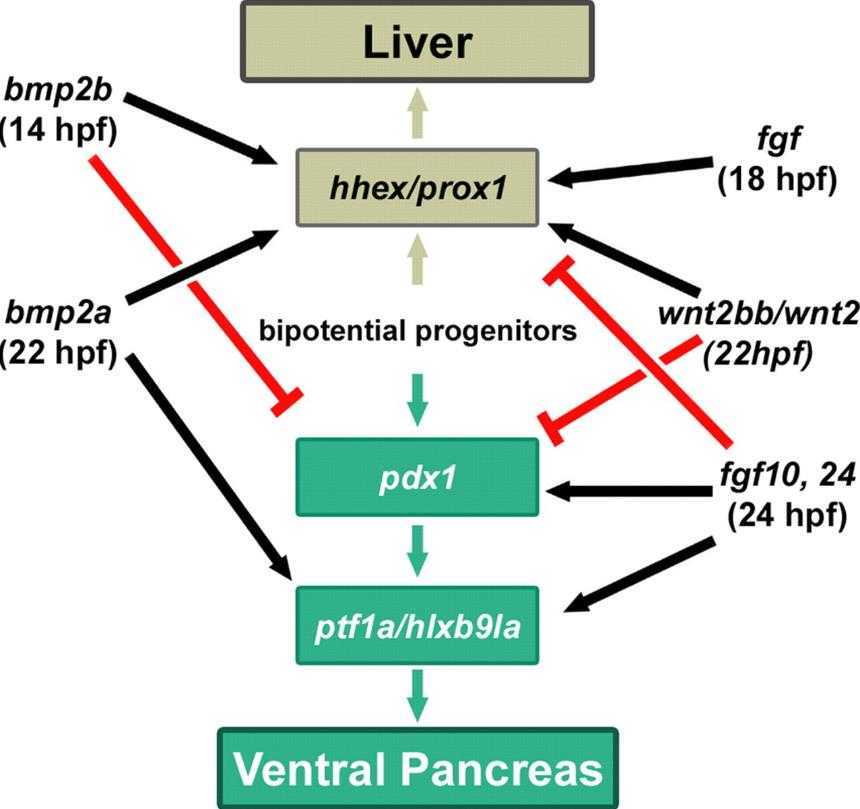Recombinant Zebrafish bmp2a protein
| Cat.No. : | bmp2a-8706D |
| Product Overview : | Recombinant Zebrafish bmp2a protein(B3DI86) (Gln272-Arg386) was expressed and purified in E. coli with an initial Met. |
- Specification
- Gene Information
- Related Products
- Case Study
- Application
- Download
| Species : | Zebrafish |
| Source : | E.coli |
| Tag : | Non |
| ProteinLength : | 272-386 a.a. |
| Tag : | Non |
| Form : | Lyophilized from sterile 30mM HAC, pH 3.0. |
| Bio-activity : | Measured by its ability to induce alkaline phosphatase production by ATDC5 mouse chondrogenic cells. The ED50 for this effect is typically 0.5-3 μg/mL. |
| Molecular Mass : | The recombinant zebrafish BMP2A consists of 116 amino acids and has a calculated molecular mass of 13.2 kDa. It migrates as an 13 KDa band in SDS-PAGE under reducing conditions. |
| Purity : | > 95 % as determined by SDS-PAGE |
| Storage : | Samples are stable for up to twelve months from date of receipt at -20°C to -80°C. Store it under sterile conditions at -20°C to -80°C. It is recommended that the protein be aliquoted for optimal storage. Avoid repeated freeze-thaw cycles. |
| Reconstitution : | It is recommended that sterile water be added to the vial to prepare a stock solution of 0.2 ug/ul. Centrifuge the vial at 4°C before opening to recover the entire contents. |
| Official Symbol | bmp2a |
| ◆ Recombinant Proteins | ||
| BLOC1S4-920Z | Recombinant Zebrafish BLOC1S4 | +Inquiry |
| Ubiquitin-13HFL | Recombinant Full Length Human Ubiquitin Protein, Aldehyde Labeled | +Inquiry |
| Cd36-7085M | Recombinant Mouse Cd36 protein, His & T7-tagged | +Inquiry |
| GNTR-0350B | Recombinant Bacillus subtilis GNTR protein, His-tagged | +Inquiry |
| SEPW2B-9768Z | Recombinant Zebrafish SEPW2B | +Inquiry |
| ◆ Native Proteins | ||
| CA19-9-01H | Active Native Human CA19-9 protein | +Inquiry |
| Protein A-01S | Active Native Staphylococcus aureus Protein A | +Inquiry |
| IgA-249P | Native Pig Immunoglobulin A | +Inquiry |
| HB-44R | Native Rabbit Hemoglobin (HB) Protein | +Inquiry |
| FGG -60R | Native Rabbit Fibrinogen | +Inquiry |
| ◆ Cell & Tissue Lysates | ||
| C6orf106-8003HCL | Recombinant Human C6orf106 293 Cell Lysate | +Inquiry |
| PPP1CA-2952HCL | Recombinant Human PPP1CA 293 Cell Lysate | +Inquiry |
| OSCAR-3528HCL | Recombinant Human OSCAR 293 Cell Lysate | +Inquiry |
| PC-12-080RCL | Rat PC-12 Whole Cell Lysate | +Inquiry |
| DPYSL5-509HCL | Recombinant Human DPYSL5 cell lysate | +Inquiry |
Case 1: Mostofa F, et al. Molecules. 2022
The bone morphogenic protein (BMP) group is part of the bigger TGF-beta family and is key when it comes to starting gut inflammation and arthritis. There's been some chatter about a link between our gut and joints, but not much is known about the genetics behind it. Enter BDMC33, a potential new anti-inflammatory drug. The latest study takes a deep dive into the BMP family, especially focusing on their roles in gut-related arthritis and how BDMC33 might ease this inflammation. Researchers began by checking out the BMP genes across the zebrafish genome using several computational techniques. Then, they looked at how curcumin-derived compounds affect BMP gene expression in young zebrafish exposed to TNBS, using a technique called real-time qPCR. Here 38 BMP proteins that fall into five main groups and contain TGF beta-related domains. Impressively, BDMC33 managed to lower the expression of four specific BMP genes in those TNBS-treated fish, with the most significant drop seen in the BMP2a gene, followed by BMP7b, BMP4, and BMP6.

Fig1. Relative normalized expression of BMP7b, BMP4, BMP2a, and BMP6 induced with TNBS.

Fig2. Relative normalized fold expression in BMP2a genes induced with of TNBS and treated with BDMC33.
Case 2: Naye F, et al. Mol Biol Cell. 2012
In vertebrates, the pancreas and liver develop from shared progenitors found in the embryonic gut endoderm. BMP and FGF signaling play a big role here; they don't just shut down pancreas development to favor the liver—they also help get the ventral pancreas going a bit later on. In zebrafish, BMP seems to be crucial between 20 to 24 hours after fertilization for the ventral pancreas. Studies show that bmp2a, which hangs out in the lateral plate mesoderm during that time, is key for getting the ventral pancreas just right. Interestingly, BMP isn't just a one-trick pony focused on the pancreas; it also helps with healthy liver marker expression. Meanwhile, the absence of FGF10 and FGF24 in embryos can cause ventral pancreas issues and lead to some unintended liver cell formations.

Fig1. Lateral view showing bmp2a expression in the LPM starting at 22 hpf.

Fig2. Lateral view of hlxb9la expression at 38 hpf in wt and Tg in bmp2a morphants.
Zebrafish bmp2a protein is a key player when it comes to understanding how bone morphogenetic proteins (BMPs) work in vertebrates. Part of the BMP family, bmp2a is instrumental in helping bone-making cells, called osteoblasts, grow and mature. It shares a lineage with other vertebrate genes, but in fish like zebrafish, it's split into bmp2a and bmp2b, each doing slightly different jobs during the fish's development, especially noticeable in their embryos and bones. Bmp2a also kicks in for developing parts like the ventral pancreas and helps regulate another gene named fgf24 in a specific tissue region known as the lateral plate mesoderm. If there's a mutation in bmp2a, zebrafish can end up with some rib and spine issues, really showing its vital role in shaping the skeleton.
The recombinant zebrafish bmp2a protein is like a versatile toolkit for researchers and industries alike. In the lab, it's a go-to for exploring bone development and repair processes, helping scientists unlock the secrets of growth and regeneration. It's not just for basic science, though; in the biotechnology field, this protein could be key in developing new treatments or therapies, particularly for bone-related conditions. Imagine better ways to heal fractures or boost bone health. What's more, in sectors like aquaculture, using this protein might lead to healthier, faster-growing fish. All in all, whether you're in a research lab or out improving fish farming, the applications of zebrafish bmp2a are broad and impactful, making it a true multi-tool in both science and industry.

Fig1. Model for the role of BMP and FGF pathways in hepatopancreatic patterning. (François Naye, 2012)
Not For Human Consumption!
Inquiry
- Reviews
- Q&As
Ask a Question for All bmp2a Products
Required fields are marked with *
My Review for All bmp2a Products
Required fields are marked with *
Inquiry Basket


